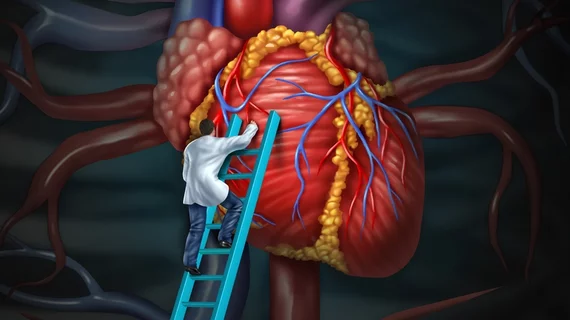Transcatheter PVL closure linked to lower 30-day mortality than surgery
Transcatheter paravalvular leak (PVL) closure is safe and effective, according to new research published in JACC: Cardiovascular Interventions.[1] It is also associated with a lower 30-day mortality rate than surgery.
The study’s authors tracked data from 161 patients who underwent transcatheter or surgical PVL treatment from 2010 to 2021 at a single high-volume facility in the U.K. While 71.4% of patients underwent transcatheter procedures, the remaining 28.6% were treated with surgery.
“There were no significant demographic differences between groups,” wrote first author Joel Giblett, MD, an interventional cardiologist with Liverpool Heart and Chest Hospital, and colleagues. “Patients in the transcatheter group were more likely to have clinically significant hemolysis. Surgical patients were more likely to have hypertension and hypercholesterolemia.”
Giblett et al. did note that patients presenting with a greater number of leaks were more likely to undergo a transcatheter closure. In addition, patients with a “significant transvalvular component to the leak” were more likely to be treated with surgery.
Overall, in-hospital mortality (0% vs. 6.7%) and 30-day mortality (1.5% vs. 9.3%) were lower for the transcatheter group than the surgery group.
The two groups had comparable long-term mortality rates, however.
“Long-term mortality is high because patients are often frail, with multiple comorbidities,” the authors wrote. “Careful heart team planning should be the cornerstone of decision making, as upfront risk and quality of life may be more important than long-term survival. We believe that the two therapeutic approaches are complementary.”
The two treatment options were also associated with comparable changes to New York Heart Association functional class changes.
“Transcatheter closure of PVL in a high-volume center is safe, with lower early mortality than surgical repair and comparable long-term mortality,” the group concluded.
Related Structural Heart Disease Content:
Left bundle branch block after TAVR hurts outcomes, even when no permanent pacemaker is required
New guidelines detail PFO management, including when to consider closure
Transcaval TAVR outperforms transaxillary TAVR when femoral access is not an option
Reference:

